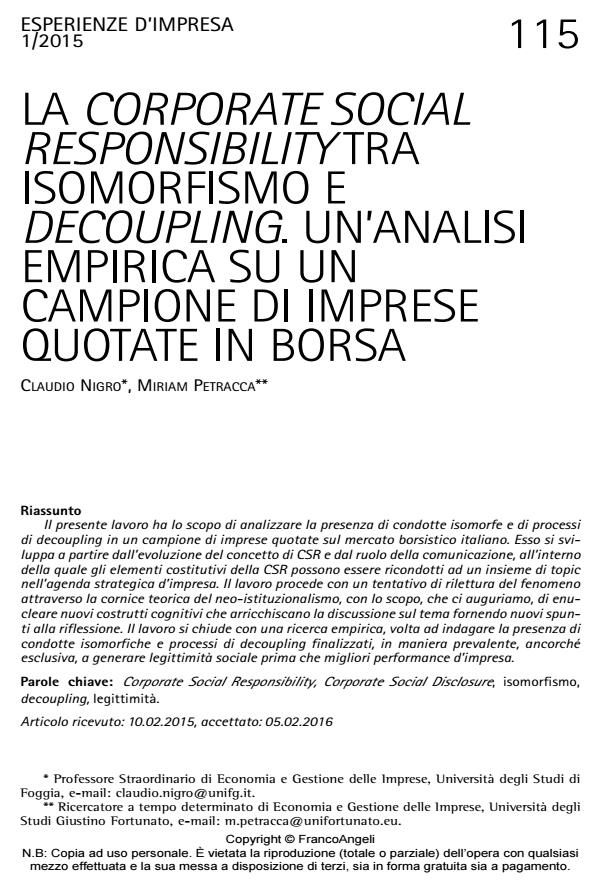La corporate social responsibility tra isomorfismo e decoupling. Un’analisi empirica su un campione di imprese quotate in Borsa
Titolo Rivista ESPERIENZE D'IMPRESA
Autori/Curatori Claudio Nigro, Miriam Petracca
Anno di pubblicazione 2016 Fascicolo 2015/1
Lingua Italiano Numero pagine 21 P. 115-135 Dimensione file 363 KB
DOI 10.3280/EI2015-001006
Il DOI è il codice a barre della proprietà intellettuale: per saperne di più
clicca qui
Qui sotto puoi vedere in anteprima la prima pagina di questo articolo.
Se questo articolo ti interessa, lo puoi acquistare (e scaricare in formato pdf) seguendo le facili indicazioni per acquistare il download credit. Acquista Download Credits per scaricare questo Articolo in formato PDF

FrancoAngeli è membro della Publishers International Linking Association, Inc (PILA)associazione indipendente e non profit per facilitare (attraverso i servizi tecnologici implementati da CrossRef.org) l’accesso degli studiosi ai contenuti digitali nelle pubblicazioni professionali e scientifiche
Il presente lavoro ha lo scopo di analizzare la presenza di condotte isomorfe e di processi di decoupling in un campione di imprese quotate sul mercato borsistico italiano. Esso si sviluppa a partire dall’evoluzione del concetto di CSR e dal ruolo della comunicazione, all’interno della quale gli elementi costitutivi della CSR possono essere ricondotti ad un insieme di topic nell’agenda strategica d’impresa. Il lavoro procede con un tentativo di rilettura del fenomeno attraverso la cornice teorica del neo-istituzionalismo, con lo scopo, che ci auguriamo, di enucleare nuovi costrutti cognitivi che arricchiscano la discussione sul tema fornendo nuovi spunti alla riflessione. Il lavoro si chiude con una ricerca empirica, volta ad indagare la presenza di condotte isomorfiche e processi di decoupling finalizzati, in maniera prevalente, ancorché esclusiva, a generare legittimità sociale prima che migliori performance d’impresa.
Parole chiave:Corporate Social Responsibility, Corporate Social Disclosure, isomorfismo, decoupling, legittimità
Claudio Nigro, Miriam Petracca, La corporate social responsibility tra isomorfismo e decoupling. Un’analisi empirica su un campione di imprese quotate in Borsa in "ESPERIENZE D'IMPRESA" 1/2015, pp 115-135, DOI: 10.3280/EI2015-001006